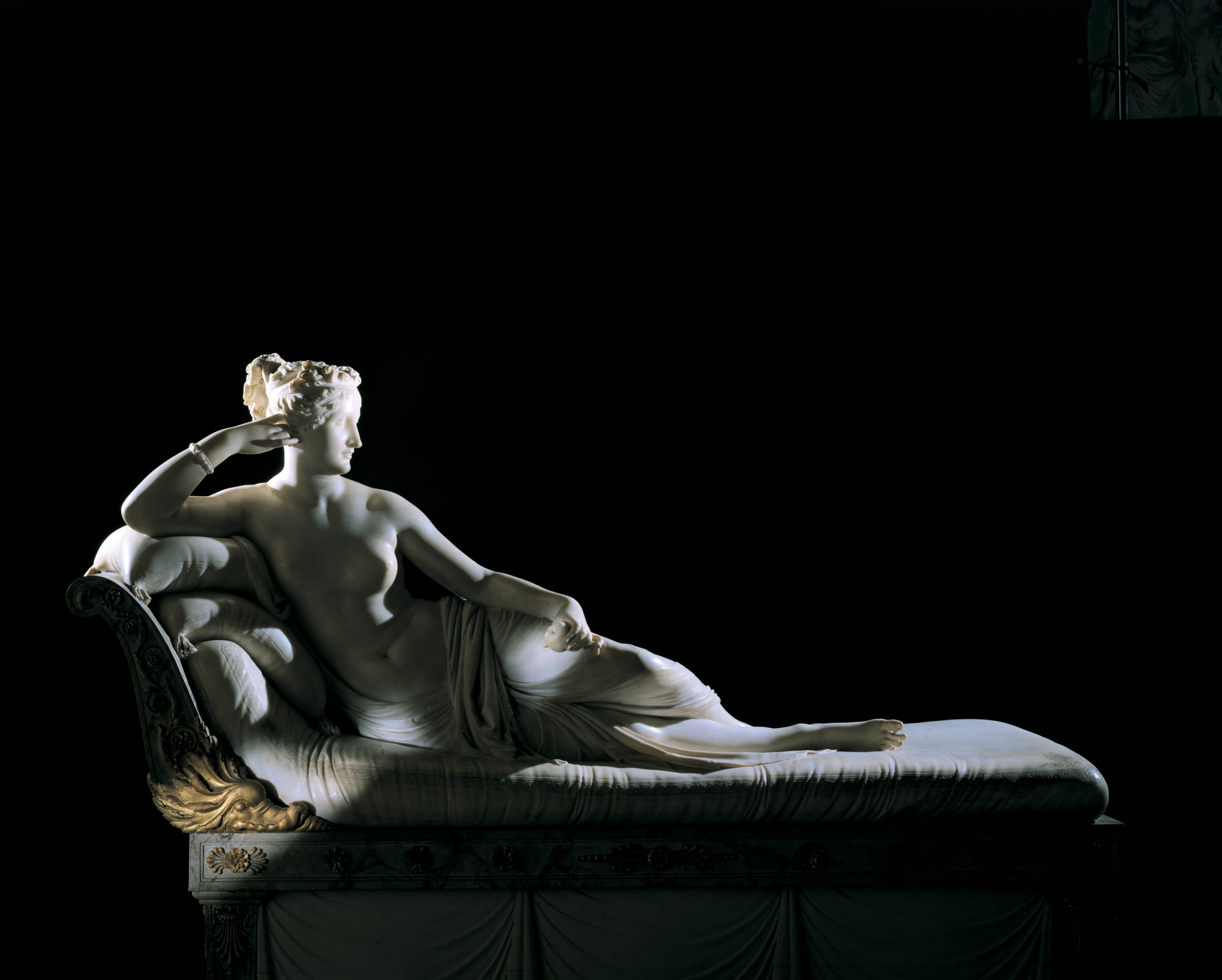CANOVA AND THE VENUS VICTRIX

Canova is part of the soul and history of the Borghese collection, and so an exhibition focusing on the sculptor and his emblematic creation preserved there – the portrait of Pauline Borghese Bonaparte as Venus Victrix – seems a natural choice. However, the exhibition also celebrates the 250th anniversary of the birth of the artist and the two hundred years of the portrait of Pauline.
Antonio Canova knew the Borghese art collection well and deeply admired it. One of the finest artists of his time, he was commissioned by Camillo Borghese to create the portrait of his wife. Although extremely possessive of this work during his lifetime, it was destined to become an emblematic image of Neoclassicism.
At the same time, the artist was fiercely opposed to Camillo’s reprehensible act of selling the prestigious collection of ancient art to his brother-in-law Napoleon and told him so. In fact, Canova had a strong civil commitment to protecting artistic heritage, and a clear confirmation of this was his appointment as Inspector General of Fine Arts, a position already held by Raphael.
He created a new language in art based on the pre-eminence of the conceptual process and the programmatic pursuit of technical perfection. This exhibition presents an opportunity to compare his works with the other paintings and sculptures in the museum, Bernini’s sculptures in particular, and suggests that the relationship between the two artists could be fruitful food for thought.
Curated by Anna Coliva and Fernando Mazzocca, the exhibition is part of the program “Dieci grandi mostre [Ten great exhibitions]”. The catalogue is published by Electa.